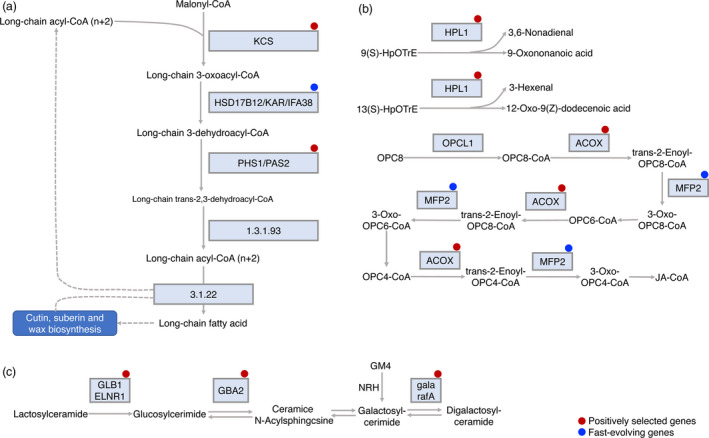Figure 5.

Fast‐evolving and positively selected genes in lipid metabolism. (a) Fatty acid elongation. Very‐long‐chain fatty acids (VLCFAs) are synthesized via four successive enzymatic reactions including condensation, reduction, dehydration, and a second reduction (Beaudoin et al., 2009; Denic and Weissman, 2007). PHS1 and KAR are also involved unsaturated fatty acids biosynthesis. Another enzyme, ACOX1 is a rate‐limiting enzyme in peroxisomal fatty acids β‐oxidation (Oaxaca‐Castillo et al., 2007). (b) Alpha‐Linolenic acid metabolism. Alpha‐Linolenic acid is a precursor compound and plays an important role in human health. (c) Sphingolipid metabolism. Sphingolipids and corresponding metabolites are not only key elements of cellular membranes, but are also involved in signal transduction for example in cell growth, differentiation, senescence, and programmed cell death. E3.2.1.22B (or gala or rafA) is involved in carbohydrate metabolic process and cell wall organization (Tapernoux‐Luthi et al., 2004). GLB1 (ELNR1) is a glycosidase, which catalyzes the hydrolysis of terminal β‐linked galactose residues (Ohto et al., 2012). GBA2 plays a role in glucosylceramide metabolism (Boot et al., 2007). Red and blue solid circles represent positively selected genes and fast‐evolving genes respectively.
